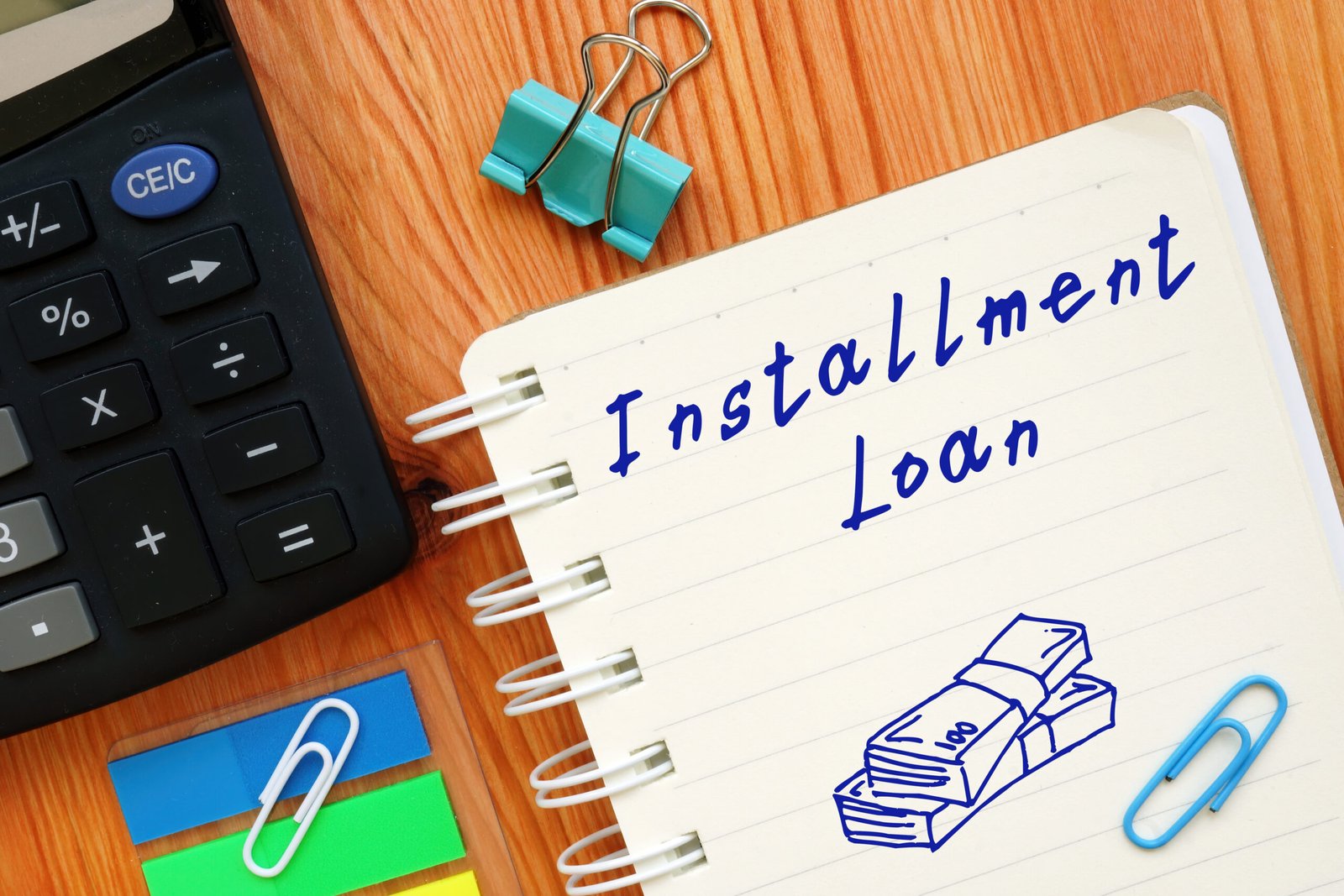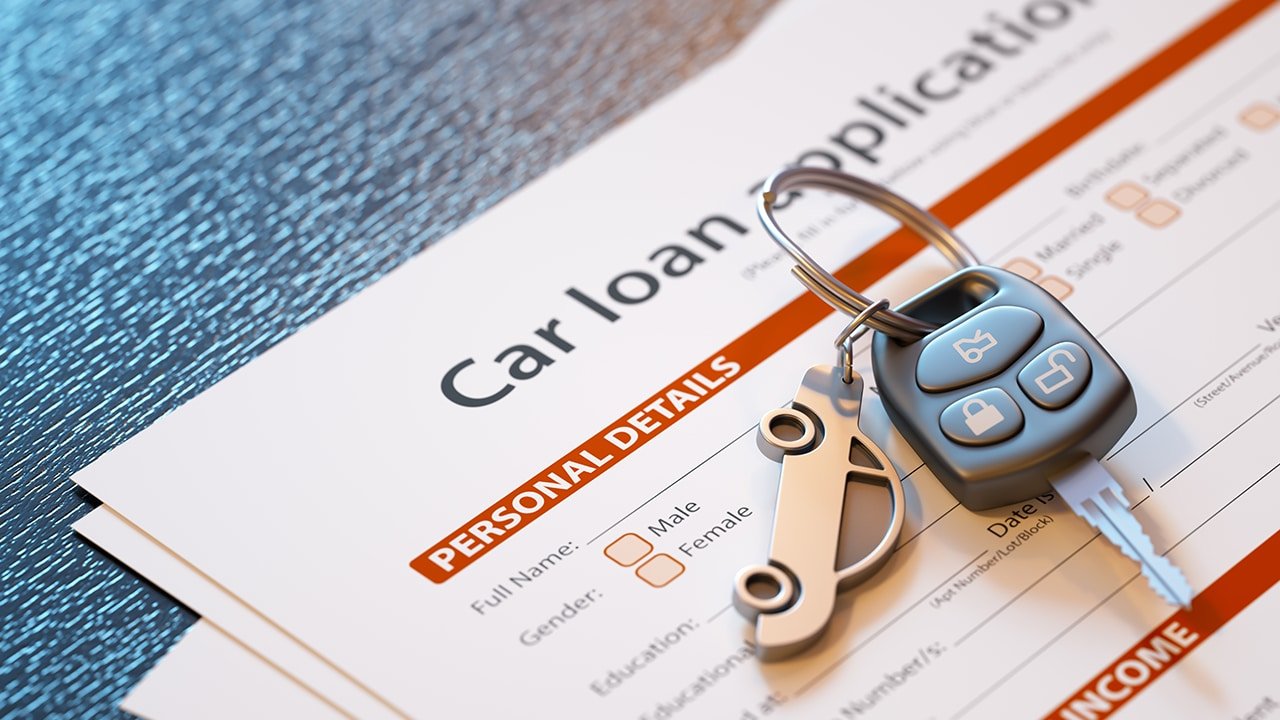Introduction to Installment Loans
Installment loans are a specific type of borrowing arrangement where an individual receives a lump sum of money upfront and agrees to repay this amount over a set period through regular, scheduled payments. These loans are typically characterized by their structured repayment terms, which allow borrowers to manage their finances more effectively compared to other forms of credit, such as credit cards or payday loans.
The primary feature of installment loans is the fixed payment schedule, which includes both principal and interest portions. Borrowers can expect consistent monthly payments, making it easier to plan their budgets. The total amount borrowed, the interest rate applied, and the duration of the loan term are crucial factors that determine the monthly payment amount. For instance, a borrower with bad credit may still access installment loans but might face higher interest rates due to perceived risk by lenders.
Loan terms for installment loans can vary widely. They may range from a few months to several years, depending on the lender’s policies and the amount borrowed. Shorter-term loans typically incur higher monthly payments but cost less in interest over the life of the loan. Conversely, longer-term loans result in smaller monthly payments but can accumulate more interest over time.
In addition to interest rates and repayment terms, another important aspect of installment loans is their application process. Lenders often assess the borrower’s creditworthiness, which can be challenging for those with bad credit. Nevertheless, many financial institutions specialize in providing installment loans for individuals with poor credit history, thereby offering a vital resource for those aiming to regain financial stability.
The Impact of Bad Credit
Bad credit is typically defined by credit scores that fall below the acceptable threshold set by lenders, often categorized as a score under 580 on the FICO scale. Individuals classified with bad credit may possess a history of late payments, defaults, or high credit utilization rates, which together create a negative perception in the eyes of financial institutions. This financial history profoundly affects an individual’s borrowing capacity, significantly limiting access to traditional credit products.
The significance of credit scores cannot be overstated. A low credit score signals to lenders that the borrower may pose a higher risk, resulting in escalated interest rates, stringent repayment terms, or outright denial of credit. Many borrowers harbor misconceptions about bad credit, believing that it precludes them from obtaining any form of financial assistance. In reality, options such as installment loans for bad credit are available, specifically designed to cater to the needs of those deemed high-risk borrowers.
However, the challenges experienced by individuals with bad credit extend beyond mere borrowing limitations. Psychologically, living with poor credit can lead to feelings of shame and anxiety, significantly affecting self-esteem and daily decision-making. Financially, it often results in higher costs of borrowing, ultimately compounding the difficulties faced by these individuals. The interest rates associated with installment loans for bad credit can be disproportionately high, leading to sizable monthly payments that may strain already tight budgets.
Moreover, the cycle of bad credit can perpetuate itself. As borrowers struggle to manage existing debts, they may miss further payments, creating an uphill battle towards financial recovery. The combination of psychological barriers and financial limitations complicates the quest for better credit, demonstrating the critical need for financial education and support for those affected by bad credit.
Benefits of Installment Loans for Bad Credit
Installment loans for bad credit offer several significant advantages that can benefit borrowers who find themselves in challenging financial situations. One notable benefit is the opportunity to build a positive credit history. When borrowers make consistent, timely payments, it can positively impact their credit score. This improvement can help them in the long run, making future credit applications more favorable.
Another advantage of these loans is the potential for lower interest rates when compared to alternative financing options. While individuals with bad credit may struggle to secure loans, installment loans can sometimes provide more competitive rates than payday loans or cash advances, which often come with exorbitant interest charges. By choosing installment loans, borrowers can mitigate the costs associated with borrowing, making it a more fiscally responsible choice.
Predictability is also a key benefit of installment loans for bad credit. These loans typically come with fixed interest rates and predetermined repayment terms, allowing borrowers to know exactly how much they will need to pay each month. This predictability aids in budgeting and financial planning, reducing the risk of incurring additional debt due to unexpected payment fluctuations.
Furthermore, installment loans can serve as a financial lifeline during emergencies. Whether it is for unexpected medical expenses, necessary home repairs, or urgent car maintenance, borrowers can access funds quickly. This availability can be crucial for those with bad credit, who might find themselves unable to obtain credit through traditional channels during a crisis. Overall, choosing installment loans for bad credit can present a viable option, enhancing financial stability and opening doors to future opportunities.
Types of Installment Loans Available
For individuals with bad credit, various types of installment loans can provide much-needed financial assistance. These loans are structured with fixed payments over a specified period, making them an attractive option for those who may face difficulties in managing their finances. The most common types of installment loans available include personal loans, auto loans, and mortgages.
Personal loans are often the most flexible option for borrowers with bad credit. Many lenders offer personal loans specifically tailored for individuals with credit challenges. The eligibility requirements vary by lender, but typically, borrowers need to demonstrate a stable income and provide proof of residency. Loan amounts usually range from a few hundred dollars to several thousand, with repayment terms that can last anywhere from a year to several years. However, interest rates may be higher due to the perceived risk associated with lending to borrowers with poor credit histories.
Auto loans are another prevalent type of installment loan for those with bad credit. Many dealerships offer financing options, sometimes enabling buyers to secure a vehicle despite their credit scores. Eligibility for an auto loan often depends on the capacity to make a down payment, along with income verification. While these loans can come with higher interest rates, owning a reliable vehicle may help improve a borrower’s credit profile over time.
Mortgages specifically for bad credit borrowers are also available, although they tend to come with stricter terms. Programs such as FHA loans cater to those with lower credit scores, with the government backing portion of the loan mitigating some of the risks for lenders. Borrowers typically need to provide a larger down payment and demonstrate a consistent income stream to qualify for these home loans.
Exploring the various types of installment loans for bad credit thoroughly is essential for making informed financial decisions.
How to Qualify for an Installment Loan with Bad Credit
Qualifying for installment loans for bad credit can be challenging, but it is not impossible. Lenders often have specific criteria that potential borrowers must meet to increase their chances of approval. One of the primary factors is income verification. Lenders typically require proof of steady income, which may include pay stubs, tax returns, or bank statements. This documentation helps the lender assess the borrower’s ability to repay the loan.
Employment status plays a crucial role in the qualification process as well. Stable, long-term employment can enhance a borrower’s profile in the eyes of lenders. If an individual has been consistently employed in a full-time position, it demonstrates a level of financial stability that may prompt lenders to overlook poor credit history. Additionally, borrowers should be prepared to provide details about their existing debts. Many lenders will take into account the debt-to-income ratio, which is a calculation that assesses how much of one’s income goes towards paying existing debts.
Moreover, some lenders consider alternative credit assessments, which evaluate a borrower’s creditworthiness through various data points, such as payment histories for rent, utilities, and other financial obligations. This method can provide a more comprehensive picture of a borrower’s fiscal responsibility and may help those with bad credit secure a loan.
To enhance the probability of approval for installment loans for bad credit, borrowers can take proactive measures. Improving financial habits, such as paying bills on time and reducing outstanding debts, can make a positive impression on lenders. Additionally, seeking pre-approval from different lenders can allow individuals to compare offers and choose the most favorable terms without impacting their credit scores.
Choosing the Right Lender
When seeking installment loans for bad credit, selecting the appropriate lender is crucial to ensure favorable lending terms and a smooth borrowing experience. The first step in this process is to compare interest rates among various lenders. Interest rates can vary significantly, and even a small difference can impact the total amount you repay over the life of the loan. Therefore, it is essential to shop around and assess multiple options before making a commitment.
In addition to interest rates, reading customer reviews and testimonials can provide valuable insights into a lender’s reputation and reliability. This information can be found on various online platforms and social media. Pay attention to feedback on aspects such as customer service, loan processing times, and responsiveness to inquiries. These factors often reveal more about a lender than their advertised terms alone.
Understanding the fees associated with installment loans for bad credit is another critical step in choosing the right lender. Some lenders may charge hidden fees such as origination fees, late payment fees, or prepayment penalties. It is vital to request a detailed breakdown of all costs and review the loan agreement carefully before proceeding. Transparency in lending practices is essential, and reputable lenders will provide clear information regarding any potential fees.
Ultimately, choosing the right lender involves careful consideration of interest rates, fees, and customer reviews. By taking the time to conduct thorough research and ask the right questions, borrowers can identify lenders that not only accommodate their credit situation but also prioritize ethical lending practices. As you navigate the lending landscape, remember that an informed decision can greatly impact your financial future.
The Application Process Explained
Applying for installment loans for bad credit can initially seem daunting, but understanding the steps involved can simplify the process significantly. The first step entails gathering necessary documentation. Lenders typically require proof of identity, income, and residence. Common documents might include a government-issued ID, recent pay stubs, and a utility bill or lease agreement. It is essential to have these documents prepared to speed up the application process.
Once the documentation is ready, the next step involves submitting the application. This can often be done online, which is a preferred option for many borrowers. During the application process, lenders will ask for personal information such as your social security number, details about your employment, and your monthly expenses. It is crucial to be honest and accurate when providing these details, as inaccuracies can lead to delays in approval or even denial of the loan.
After submitting your application, you will enter the waiting period for approval. This may take anywhere from a few hours to several days, depending on the lender’s policies. During this time, it is advisable to refrain from applying for multiple loans simultaneously as that can negatively affect your credit profile. Be prepared for the lender to perform a credit check, which can influence your credit score temporarily.
Once approved, the lender will provide loan terms, which is where careful attention is crucial. Reading the fine print of the loan agreement is imperative as it outlines interest rates, repayment schedules, and any potential fees. Understanding these details helps ensure that you are fully informed about your obligations before committing to the installment loan for bad credit. Overall, being diligent throughout the application process can lead to a more favorable borrowing experience.
Managing Installment Loan Payments
Effectively managing installment loans for bad credit is crucial for maintaining financial stability and avoiding further complications. The first step in managing these payments is to create a comprehensive budget that outlines all income and expenses. A well-prepared budget will allow individuals to allocate sufficient funds towards their loan repayments while ensuring they can meet other necessary financial obligations.
Automatic payments Process
Incorporating automatic payments can further enhance the ease of managing installment loans. Many lenders offer the option to set up automatic debits from a bank account, which ensures that payments are made on time without the risk of forgetting due dates. This proactive approach not only fosters good repayment habits but also helps avoid late fees and penalties that can arise from missed payments. It is advisable to monitor bank accounts regularly to ensure that there are sufficient funds available to cover these automated withdrawals, preventing overdraft charges.
It is also important to understand the potential penalties associated with late payments on installment loans. Lenders typically outline these terms in the loan agreement, detailing fees and the possible impact on credit scores. Being aware of these consequences can motivate borrowers to prioritize timely payments. Additionally, if a borrower finds themselves unable to make a payment, there may be options available for hardship extensions or repayment plans. Engaging in open communication with lenders can provide alternative solutions that can prevent loan default.
Lastly, borrowers should strive to avoid defaulting on loans entirely, as this can lead to a severe negative impact on their credit history. Staying proactive in managing finances, adhering to agreed repayment schedules, and reaching out to lenders if difficulties arise will not only foster a sense of financial responsibility but also contribute to improving credit standing over time. Through disciplined management, individuals can navigate the complexities of installment loans for bad credit successfully.
Alternatives to Installment Loans for Bad Credit
For individuals facing challenges with poor credit scores, exploring alternatives to installment loans for bad credit can be essential for achieving financial stability. Various options cater to those who may not qualify for traditional loans, offering a range of benefits and drawbacks. Each alternative carries its own implications, which can significantly impact an individual’s financial situation.
Benefiting with bad credit.
One significant alternative is peer-to-peer lending platforms, which connect borrowers directly to individual investors. This approach often results in more flexible criteria for loan approval, potentially benefiting those with bad credit. However, interest rates might be higher than traditional financial institutions, and the terms of the loan may vary considerably based on the investor.
Credit unions are another suitable option for individuals seeking loans despite a poor credit history. These member-owned organizations typically offer more personalized services and lower interest rates compared to commercial banks. They often require membership, but those who qualify may find more lenient lending standards. Nevertheless, approval can vary, and not all credit unions will accommodate applicants with bad credit.
Secured loans present an additional solution, where the borrower uses collateral, such as a car or savings account, to secure the loan. This arrangement may lower the lender’s risk and allows them to offer better rates. However, the potential consequence is the loss of the collateral if the borrower defaults, making it a riskier option for some individuals.
Financial assistance programs, offered by non-profit organizations, can also provide critical support for those in need. These programs may offer grants or low-interest loans designed to alleviate financial burdens. However, availability may vary by location and eligibility criteria, making this option less accessible for some borrowers.
Each alternative carries specific advantages and disadvantages, and it’s vital for individuals with bad credit to thoroughly evaluate their options before making a decision. Exploring various financial resources can guide borrowers towards a more favorable outcome and pave the way for improved financial health.




